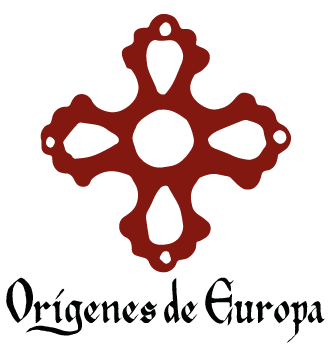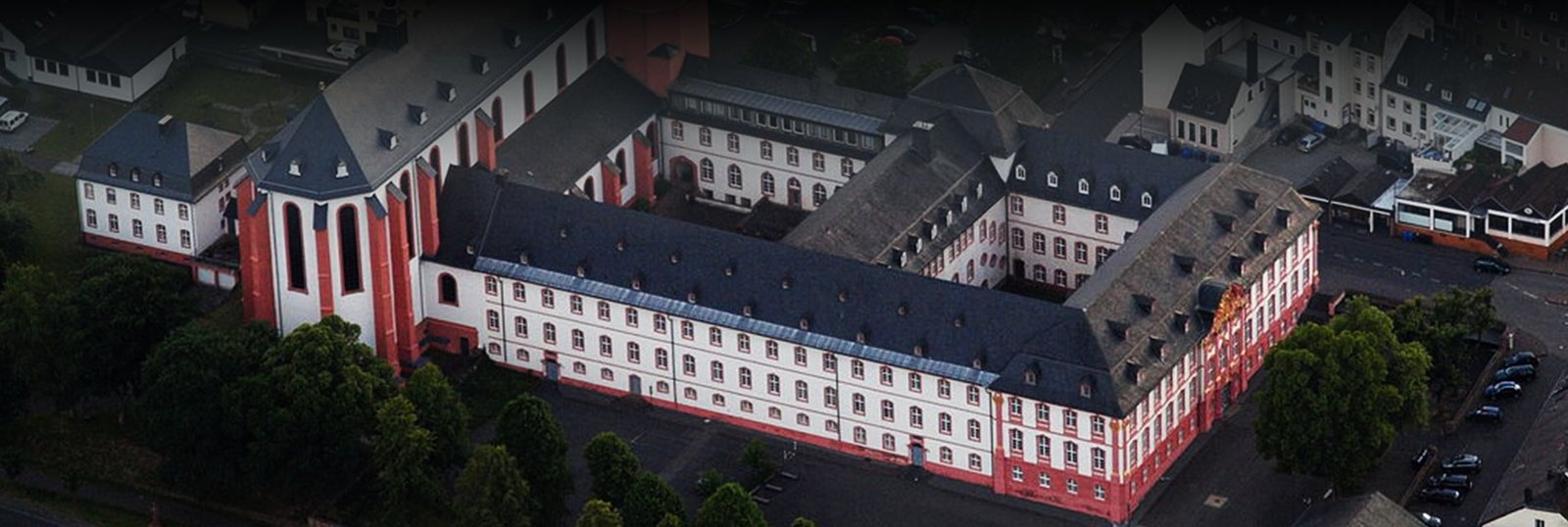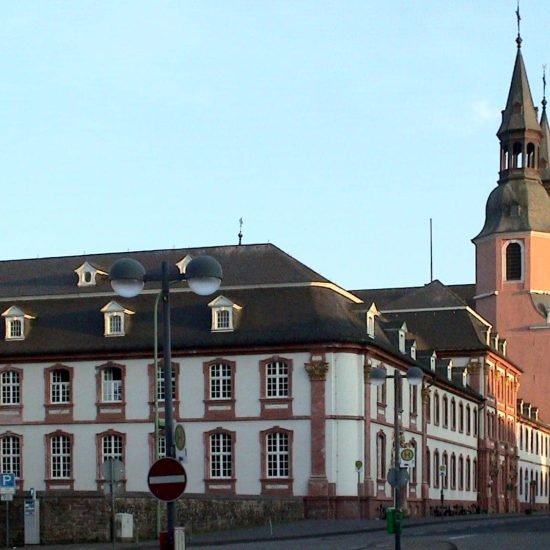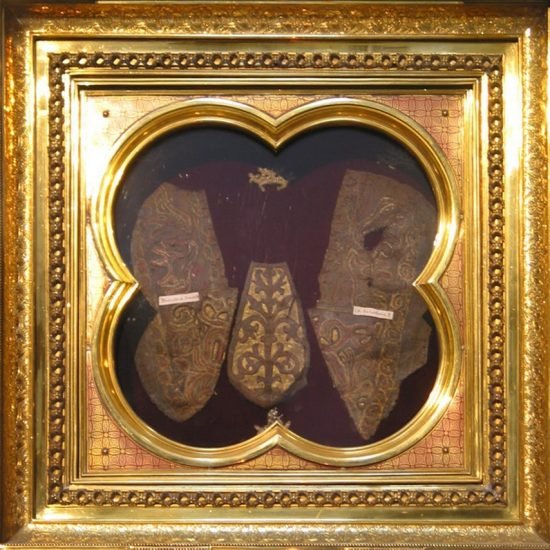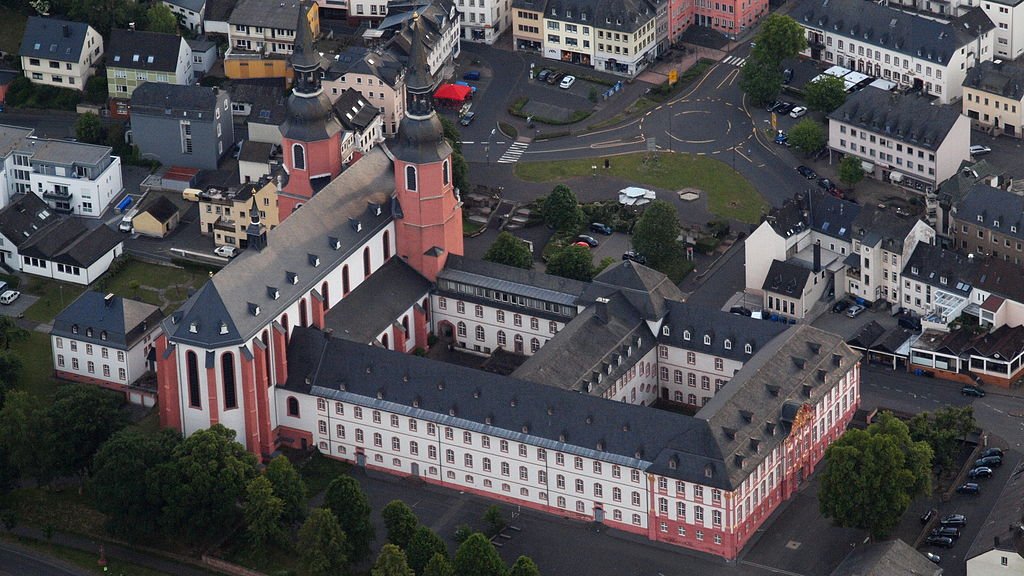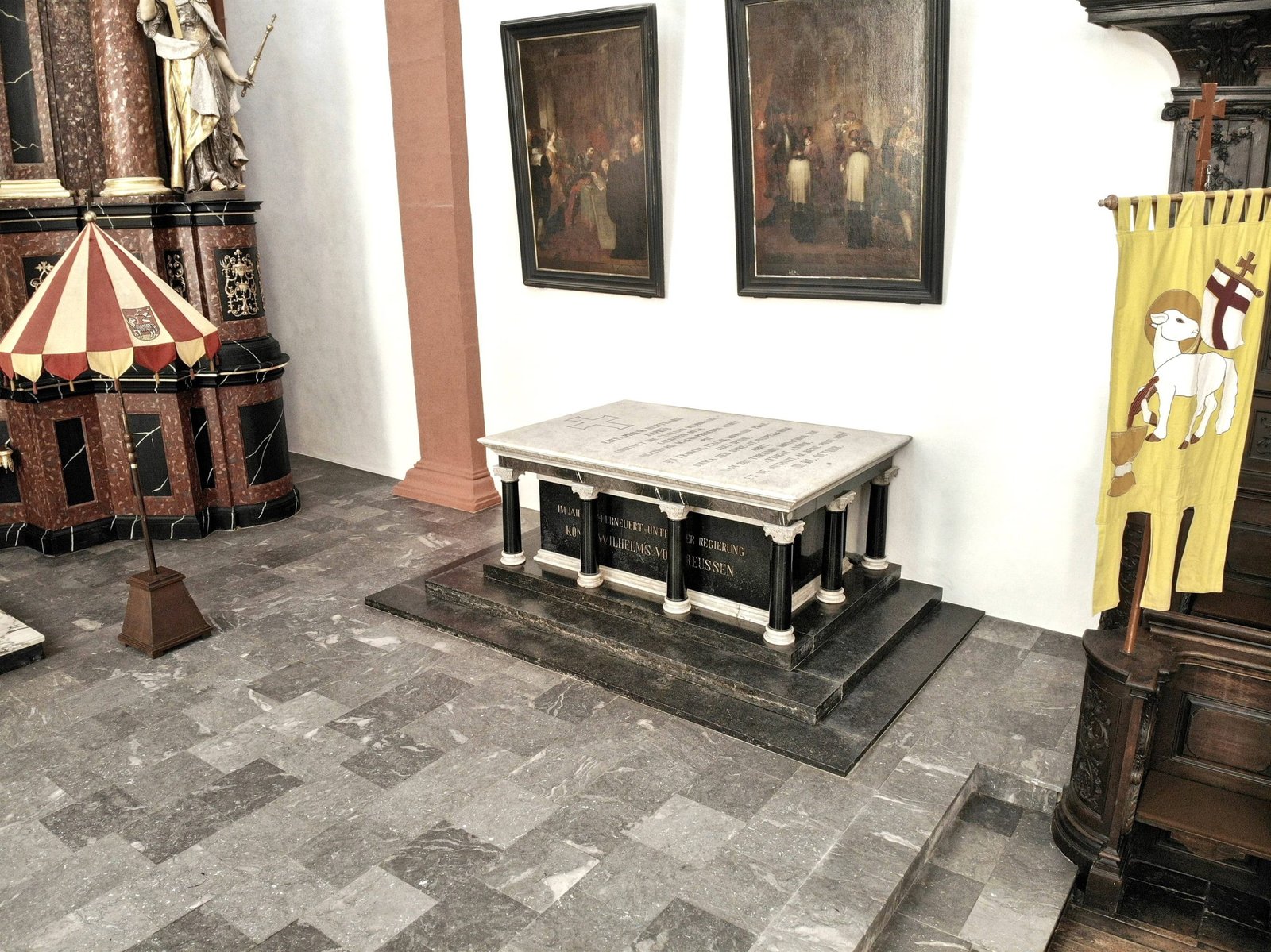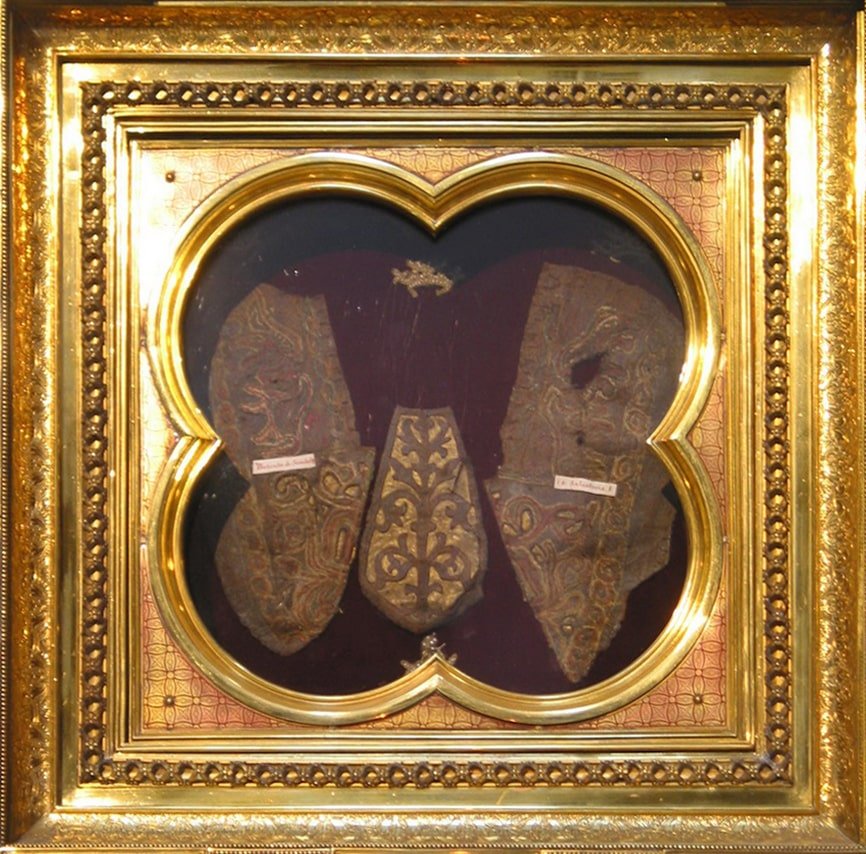Benedictine Abbey St. Salvator
per person
The Benedictine Abbey of St. Salvator is located in the middle of the inner city of the picturesque climatic health resort of Prüm in the Eifel-Ardennes. Its central location within the Frankish Empire brought the monastery the special favour of the Carolingian rulers and enabled it to develop into one of the most important early medieval monasteries in modern-day Germany.
Even today, the monastery walls are fascinating as a protected cultural monument, although the structural form of the monastery has often changed through its eventful history. The St. Salvator Basilica and the adjacent abbey building were rebuilt after the devastating destruction of the Ardennes Offensive during the Second World War in 1950 and are now used as a parish church and a school. The original building substance was used in the reconstruction.
Inside the parish church, visitors can still see the Baroque high altar, the shrine containing Christ’s sandals and the imperial tomb of Lothar I. The abbey building, which is now used as the “Regino-Gymnasium”, can only be viewed during the annual exhibition of the «European Association of Visual Artists from the Eifel and Ardennes». The monastery garden’s cloister and inner courtyard take the visitor back to medieval monastic life.
FORMAL ANALYSIS
Prüm Abbey was founded in 721 by Betrada the Elder – Charlemagne’s great-grandmother. In 752, Charlemagne’s parents Pippin and Bertrada the Younger occupied the abbey with Benedictine monks from Meaux and re-founded it as a house monastery of the Carolingians. Through this close connection with the Carolingian dynasty, the abbey had extensive possessions from the Rhine to Brittany and the Netherlands in 893.
Pippin gave the monastery the sandals of Christ as a relic, which he received from Pope Zacharias for his help in the fight against the Lombards. As a result, the abbey was eventually dedicated to the «Most Holy Redeemer» and came to be called «St. Salvator». The sandals of Christ can still be admired in a reliquary on high church feast days. Charlemagne finally had a collegiate church built for the abbey, which was consecrated in 799 in the presence of the Frankish king and Pope Leo III. In addition, the abbey came into possession of the relics of the Holy Three Physicians at this time.
The sons of the Carolingian dynasty as well as the greats of the empire were educated in the famous monastic school of Prüm. With its abbot Regino of Prüm, the abbey brought forth one of the most outstanding historiographers of the early Middle Ages. In addition, the Liber Aureus, the most important collection of Carolingian charters in the Rhineland region, was written in Prüm.
After the partition of Prüm in 855, in which Emperor Lothar I divided his kingdom among his sons, the latter retired to the abbey and died a short time later. The sarcophagus with the emperor’s bones, donated by Emperor Wilhelm I in the 19th century, is still in the St. Salvator Basilica today.
In the following centuries, Prüm Abbey was repeatedly devastated and burnt down by Norman invasions. Most of the monastery’s manuscripts got lost in this time. The monks of Prüm, on the other hand, rebuilt the collegiate church again and again, so that the abbey continued to exist and, due to its great importance for the Holy Roman Empire, was even made to an imperial principality by Emperor Frederick II in 1222.
In the 16th century, the abbey finally came to the Electorate of Trier. About 150 years later in the 18th century, the collegiate church and the abbey building were rebuilt in the Baroque style under Elector Franz Ludwig of Pfalz-Neuburg. Today’s restoration of the abbey essentially goes back to this construction.
The secularisation of the annexed territories on the left bank of the Rhine by Napoleon Bonparte in the late 18th century finally led to the dissolution of the abbey. At first it was the seat of various offices before being converted into a school in the 19th century.
The basilica of the abbey was converted into a Catholic parish church, where the Prüm parish community still holds its church services today.
After the already mentioned destruction in the course of the Second World War, the church and the abbey building were rebuilt and elevated to the status of «Basilica minor» by Pope Pius XII in 1950.
Due to sales in the course of the secularisation by Napoleon and the destruction in the course of the war, only a few precious items of today’s furnishings belong to the original treasure of the abbey. Only the choir seating and the organ from the 18th century, as well as the stone pulpit from the previous church, the relics and the tomb of Lothar I are to be mentioned here.
FLORIAN HARTMANN
- BENEDICTINE ABBEY ST. SALVATOR© FOT. https://es.wikipedia.org/wiki/Abad%C3%ADa_de_Prüm
- THE SALVATOR BASILICA AND THE FORMER ABBEY BUILDING FROM ABOVE© FOT. Wolkenkratzer, CC BY-SA 4.0, https://dewiki.de/Media/Datei:Abtei_Prüm_003x.jpg
- BASILICA OF SAN SALVADOR AND TOMB OF KING LOTHAR©FOT. https://www.eifel.info/a-salvator-basilika-pruem
- THE PRECIOUS RELIC OF “THE SANDALS OF CHRIST”, WICH GAVE THE ABBEY ITS NAME OF ST. SALVATIUS©FOT. CC BY-SA 3.0, https://es.wikipedia.org/wiki/ Sandalias_de_Cristo#/media/Archivo:6-Reliquie_der_ Sandalen_v.Jesus-k.jpg
- THE GILDED BINDING OF THE LIBER AUREUS – ONE THE MOST IMPORTANT CAROLINGIAN CHARTER COLLECTIONS FROM THE 1OTH-12TH CENTURIES- WICH WAS WRITTEN IN PRÜM©FOT. Stadtbibliothek Trier, https://www.volksfreund.de/region/kultur/goldenes-buch-fuer-ein-maechtiges-kloster_aid-5143581
- IMAGE OF THE EXCAVATIONS FROM 2017, DURING WHICH THE FUNDAMENTS OF AN EARLY MEDIEVAL WESTWERK OF THE OLD COLLEGIATE CHURCH WERE FOUND©FOT. Stephan Pütz Foto: (e_pruem ), https://www.volksfreund.de/region/bitburg-pruem/archaeologen-haben-reste-frueherer-pruemer-kirche-aus-dem-12-jahrhundert-freigelegt_aid-6269769
Tour Location
Benedictine Abbey St. Salvator
| Other monuments and places to visit | Explosion crater (approx. 190 × 90 × 20 m) at Calvary with memorial cross and newly erected mountain chapel in commemoration of the 1949 Prüm explosion disaster, in which an ammunition depot exploded. Way of the Cross at Calvary Museum Prüm on the history of Prüm and the Eifel Prüm Nature Park Centre, which focuses on the relationship between humans and animals Kruft Sculpture Park |
| Natural Heritage | Low mountain ranges of the Ardennes and Eifel |
| Historical Recreations | Restoration of the early modern abbey complex in the 1950s |
| Festivals of Tourist Interest | Annual exhibition of the “European Association of Visual Artists from Eifel and Ardennes”, which takes place in the “Regino-Gymnasium” in summer. The anual festival “Prümer Sommer” which offers a wide range of local cultural activities (June/July/August). |
| Fairs | |
| Tourist Office | Yes, you can find the Tourist-Office “Prümer Land” at Hahnplatz 1 in 54595 Prüm |
| Specialized Guides | Yes, for a guided tour through the St.Salvator-Basilica, contact info@pfarreiengemeinschaft-pruem.de or call +49 6551 147460. |
| Guided visits | Yes, see above |
| Accommodations | Yes, Prüm has a whole range of hotels, holiday flats and guesthouses as well as a youth hostel. |
| Restaurants | In the historic old town of Prüm there are a number of cafés, restaurants and pubs - including the traditional restaurant "Zur alten Abtei", from which you have an impressive view of the baroque ensemble of the old abbey building. |
| Craft | |
| Bibliography | |
| Videos | Report on the tourist destinations of the Southern Eifel - including Prüm Abbey - by the “Westdeutscher Rundfunk” broadcasting service: wdr.de |
| Website | ferienregion-pruem.de |
| Monument or place to visit | Benedictine Abbey St. Salvator, Prüm |
| Style | Early medieval collegiate church famous as the "Golden Church” / New construction of the monastery in the early modern period on the location of the former collegiate church / Restoration of the early modern abbey complex |
| Type | Baroque architecture |
| Epoch | 8th century/ 18th century / 20th century |
| State of conservation | Restoration of the Baroque building |
| Mailing address | For the parish church as the former collegiate church: Hahnplatz 17, 54595 Prüm For the “Regino-Gymnsium” as the former abbey building: Hahnplatz 21, 54595 Prüm |
| Coordinates GPS | 50°12′28″ N 6°25′13″ E |
| Property, dependency | Parish community Prüm / “Regino-Gymnasium” |
| Possibility of visits by the general public or only specialists | General public visits in the former collegiate church/ the former abbey building can be viewed only during the annual exhibition of the "European Association of Visual Artists from the Eifel and Ardennes" |
| Conservation needs | Yes |
| Visiting hours and conditions | The St. Salvator Basilica can be visited daily from 01.01. to 31.12. from 09:00 to 18:00 |
| Ticket amount | The admission to the St.Salvator-Basilica is free of charge. |
| Research work in progress | The last excavations took place in 2017. These brought to light the fundaments of a westwork of the medieval collegiate church. This illustrates the great importance of the abbey in the early Middle Ages. |
| Accessibility | Good |
| Signaling if it is registered on the route | |
| Bibliography | Haubrichs, Wolfgang, Die Kultur der Abtei Prüm zur Karolingerzeit, Bonn 1979. Isphording, Bernd, Prüm. Studien zur Geschichte der Abtei von ihrer Gründung bis zum Tod Kaiser Lothars I. (721-855), Mainz 2005. Knichel, Martina, Geschichte der Abtei Prüm bis zur Mittel des 12. Jahrhunderts, in: Johannes Mötsch / Martin Schoebel (Hg.), Eiflia Sacra. Studien zu einer Klosterlandschaft, Mainz 1994, S. 55-90. Knichel, Martina, Geschichte des Fernbesitzes der Abtei Prüm in den heutigen Niederlanden, in der Picardie, in Revin, Fumay und Fépin sowie in Awans und Loncin, Mainz 1987. Blöck, Lars, Prüm – auf der Suche nach der “Goldenen Kirche”, in: Archäologie in Deutschland 6 (2020), S. 34-35. |
| Videos | For a brief historical overview: Youtube |
| Information websites | pfarreiengemeinschaft-pruem.de rheinische-geschichte.lvr.de eifel.info wikipedia.org |
| Location | City of Prüm in the county of Bitburg/Prüm in the federal state of Rhineland-Palatinate |
